Luxor Temple
Luxor Temple majestically stands on the banks of the river Nile. As with all temples it was built over a long period of time with different Pharaohs like King Tutankhamen, Queen Hatshepsut with of course Ramses II, the "Great Builder" making the biggest impression. It can be seen during the day or floodlit after dark. |
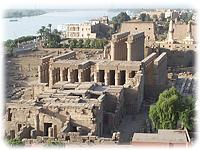 |
 |
Karnak Temple and Sound and Light show.
Karnak temple was built on a massive scale even by Egyptian standards, covering an area of over one hundred acres with a history of use spanning thirteen centuries. From the entrance along the Avenue of Rams to the largest hypostyle hall in the world one can but marvel at the workmanship of the ancients. At night time Karnak takes on a different look with a spectacular sound and light show. |
Valley of the Kings
The most famous tomb in the Valley of the Kings dates back to 1352 BC and was discovered by Howard Carter in 1922, King Tutankhamen and his fabulous treasures caused a worldwide sensation which still captures the imagination today but there are many tombs such as those of Ramses III, Ramses VI, Amenhotep II, Seti I, Horemheb and Tutmose III that shouldn't be overlooked. |
 |
 |
Valley of the Queens
The Valley of the Queens is the resting place of the queens, princes and princesses of the New Kingdom of which the most famous is the tomb of Nefertari, currently closed to visitors, but the tombs of two of the sons of Ramses III are wonderful. Generally much quieter than the Valley of the Kings. |
Deir El Medina
Know as "The Workers Village" as this is where the Egyptians who built the tombs in the Valley of the Kings and the Valley of the Queens lived. The remains of their houses give you a very good idea of what life was like back in the time of the Pharaohs and their tombs show what they were expecting in the afterlife. |
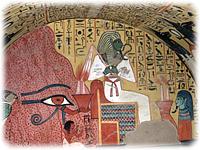 |
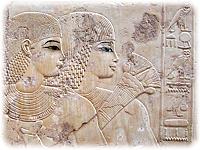 |
Tombs of the Nobles
There are many tombs of the nobles some brightly coloured, some in bass relief but all different. These tombs were made for the top officials, e.g. one being the vizier to Thutmose III and another a mayor of Thebes at the time of Amenhotep II, all were important people in Luxor during the time of the Pharaohs. |
Ramesseum
The mortuary temple of Ramses II whose murals record the battle of Qadesh that was the inspiration for Shelley's sonnet "Ozymandias". Napoleon's army made camp by the Ramesseum during his Egyptian campaign. Giovanni Belzoni (1778 - 1823) carved his name here and removed a small segment that can be seen in the British Museum, a seven ton head of Ramses II. |
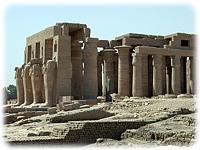 |
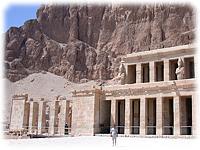 |
Queen Hatshepsut's Temple
Hatshepsut was the only woman to rule over Egypt as Pharaoh and named her temple "Djeser, Djeseru" the Splendour of Splendours. It still lives up to its name today with the splendid colourful relief's of the Anubis Chapel and the relatively small but very interesting Chapel of Hathor. |
Medinet Habu
This temple of Ramses III is quite stunning and is often overlooked by tour companies. It's walls depict Ramses III and his battle with the Libyans. The second courtyard has a large area where the original colours of this wonderful temple can still be seen. On a side wall Ramses III is depicted hunting on the banks of the Nile. |
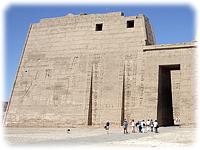 |
 |
Temple of Seti I
Situated outside the main tourist area in the village of Qurna this temple is often devoid of tourists so if you want to have a temple all to yourself then this is the place. It is well worth a visit for its relief decorations but especially as Seti I is such an important Pharaoh. His tomb can be seen in the Valley of the Kings and his mummified body in in the Cairo Museum. |
Click Here for temples to visit that are outside Luxor.
Our experienced guides and all our services are there to ensure that your holiday is tailored just for you.
|
 |
 |
 |
If you have any questions please do not hesitate to contact us.



